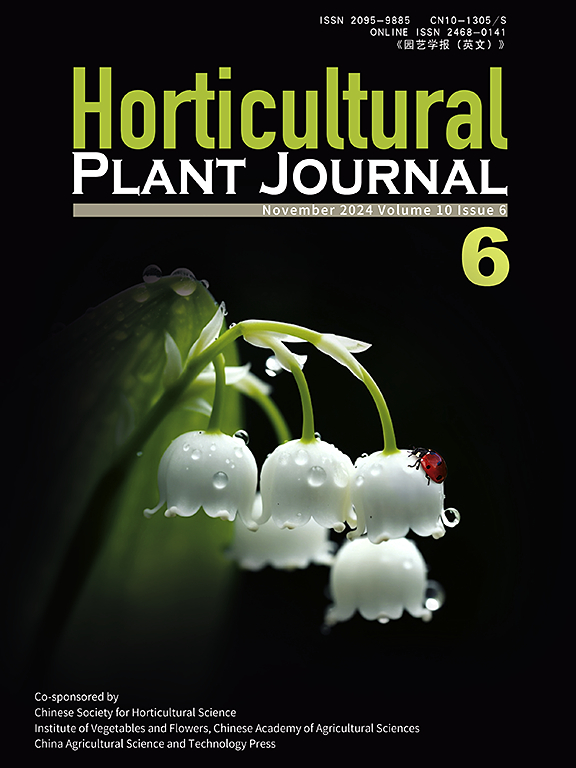ABA-induced PbrMYB8-PbrMYB169 module promotes lignin biosynthesis in corking disorder in pear fruit
IF 6.2
1区 农林科学
Q1 HORTICULTURE
引用次数: 0
Abstract
Pear fruit corking disorder is a non-infectious physiological condition that primarily occurs during the late developmental stages of pear and significantly impacts fruit quality and economic value in several major cultivars. As the underlying mechanism remains unclear, effective prevention strategies and genetic improvements continue to present major challenges. In this study, ‘Akizuki’ pear was used as experimental material, and the lignin content in cork-affected tissue was found to be significantly higher than in healthy tissue. Exogenous abscisic acid (ABA) treatment induced cork formation and promoted lignin biosynthesis, a major structural component, in both pear fruits and calli. Through integrated RNA-seq and expression analyses, we identified the ABA-responsive geneaba诱导的PbrMYB8-PbrMYB169模块促进梨果实木质素的生物合成
梨果塞病是一种主要发生在梨发育后期的非传染性生理疾病,对几个主要品种的果实品质和经济价值有显著影响。由于潜在的机制尚不清楚,有效的预防策略和基因改进继续提出重大挑战。本研究以‘秋月’梨为实验材料,发现木素含量在软木塞病组织中显著高于健康组织。外源脱落酸(ABA)处理诱导梨果实和愈伤组织软木形成,促进木质素的生物合成,木质素是梨果实和愈伤组织的主要结构成分。通过整合RNA-seq和表达分析,我们确定了aba应答基因PbrMYB8,该基因在健康和病变组织中表达差异,并与木质素生物合成有关。PbrMYB8在梨愈伤组织和拟南芥中的稳定转化证实了其促进木质素生物合成的作用。值得注意的是,PbrMYB8不仅可以独立激活木质素生物合成基因,还可以与PbrMYB169相互作用,形成一个蛋白复合物,共同调节木质素生物合成基因的表达。这些发现通过确定木质素在梨果实软木塞障碍中的关键调控因子及其相互作用网络,提高了我们对木质素生物合成的认识,并为今后提高梨果实品质的策略提供了理论基础。
本文章由计算机程序翻译,如有差异,请以英文原文为准。
求助全文
约1分钟内获得全文
求助全文
来源期刊

Horticultural Plant Journal
Environmental Science-Ecology
CiteScore
9.60
自引率
14.00%
发文量
293
审稿时长
33 weeks
期刊介绍:
Horticultural Plant Journal (HPJ) is an OPEN ACCESS international journal. HPJ publishes research related to all horticultural plants, including fruits, vegetables, ornamental plants, tea plants, and medicinal plants, etc. The journal covers all aspects of horticultural crop sciences, including germplasm resources, genetics and breeding, tillage and cultivation, physiology and biochemistry, ecology, genomics, biotechnology, plant protection, postharvest processing, etc. Article types include Original research papers, Reviews, and Short communications.
 求助内容:
求助内容: 应助结果提醒方式:
应助结果提醒方式:


